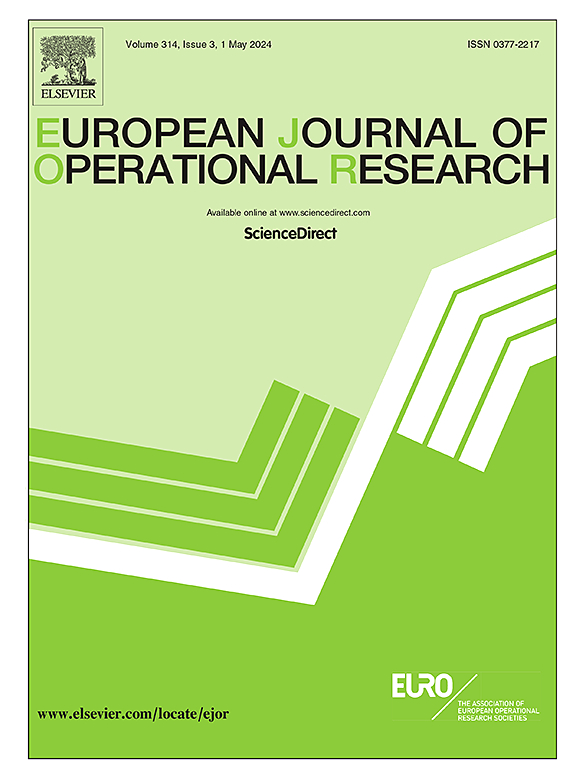Portfolio default losses driven by idiosyncratic risks
IF 6
2区 管理学
Q1 OPERATIONS RESEARCH & MANAGEMENT SCIENCE
引用次数: 0
Abstract
We consider a portfolio of general defaultable assets with low individual default risk and study the probability of the portfolio default loss exceeding an arbitrary threshold. The latent variables driving defaults are modeled by a mixture structure that combines common shock, systematic risk, and idiosyncratic risk factors. While common shocks and systematic risk have been found by many studies to contribute significantly to portfolio losses, the role of idiosyncratic risks is often found to be negligible. Such conclusions are usually established under the assumption that the portfolio size tends to infinity and idiosyncratic risk factors are not dominant. We study under-investigated scenarios where the portfolio size is fixed and the idiosyncratic risk factors are heavy-tailed, exploring two distinct scenarios: an independence scenario and an asymptotic dependence scenario. The former is standard in the literature, while the latter is motivated by recent studies that have found the inadequacy of relying solely on common factors to capture default clustering. This consideration also reflects the possibility that idiosyncratic reasons can trigger contagion among firms with liabilities to each other. In the independence scenario, even with heavy-tailed idiosyncratic risk factors, the probability of a substantial portfolio loss remains low unless a single asset carries a disproportionately large weight. Conversely, in the asymptotic dependence scenario, the primary drivers of increased exceedance probability are the dependent idiosyncratic risk factors.
特异性风险导致的投资组合违约损失
我们考虑了单个违约风险较低的一般可违约资产组合,并研究了组合违约损失超过任意阈值的概率。驱动违约的潜在变量由一个混合结构建模,该结构结合了共同冲击、系统风险和特异风险因素。许多研究发现,共同冲击和系统风险对投资组合损失的影响很大,而特异风险的作用往往可以忽略不计。这些结论通常是在投资组合规模趋于无穷大且特异风险因素不占主导地位的假设下得出的。我们研究了投资组合规模固定且特异性风险因素为重尾的未充分调查情景,探讨了两种不同的情景:独立性情景和渐进依赖性情景。前者是文献中的标准情景,而后者则是近期研究的结果,这些研究发现仅仅依靠共同因子来捕捉违约集群是不够的。这种考虑也反映了特异性原因可能引发相互有负债的公司之间的传染。在独立情况下,即使存在重尾特异风险因素,除非单一资产所占权重过大,否则投资组合遭受重大损失的概率仍然很低。相反,在渐近依赖情景下,超额概率增加的主要驱动因素是依赖性特异风险因素。
本文章由计算机程序翻译,如有差异,请以英文原文为准。
求助全文
约1分钟内获得全文
求助全文
来源期刊

European Journal of Operational Research
管理科学-运筹学与管理科学
CiteScore
11.90
自引率
9.40%
发文量
786
审稿时长
8.2 months
期刊介绍:
The European Journal of Operational Research (EJOR) publishes high quality, original papers that contribute to the methodology of operational research (OR) and to the practice of decision making.
 求助内容:
求助内容: 应助结果提醒方式:
应助结果提醒方式:


